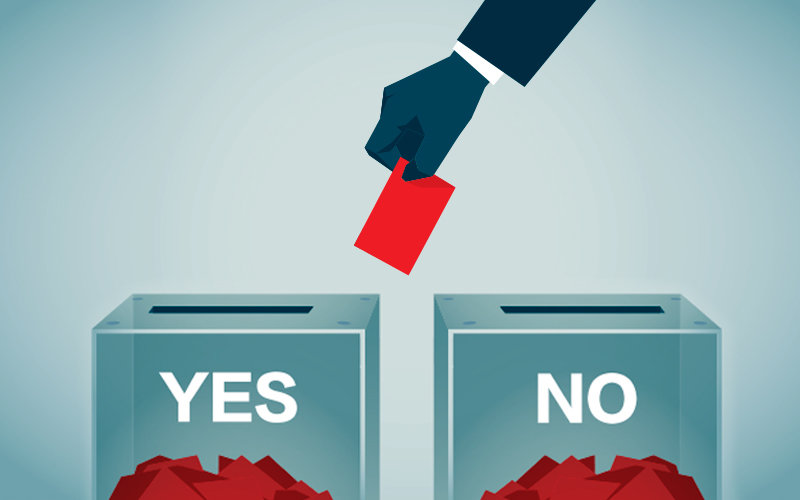
From repealing the gas tax to regulating kidney dialysis clinics, voters are being blasted this election season with commercials and ads playing up the pros and cons of a variety of issues on the November ballot.
Sarah Hill, a Cal State Fullerton associate professor of political science who specializes in California government, hosted an Oct. 23 ballot proposition workshop on campus to help students, faculty and staff learn more about the midterm issues.
Before examining the propositions one by one and sharing how key groups are voting on them, Hill explained the uniqueness of California’s legislative process.
“Only about half of the states have direct democracy, where the people can write a law, vote on it and it becomes law without the legislature being involved,” said Hill. “It’s mostly the western states, like California, Oregon and Washington — so it’s really unique to our political culture.”
There are several ways a proposition gets on the ballot, said Hill. Most are initiatives started by voters, and typically written by California interest groups, who have 180 days to gather enough signatures — currently 5 percent of the number of people who voted for governor in the last election — to get the issue on the ballot.
“Turnout was so low in the 2014 election that it decreased the number of signatures needed, so it was even easier to get an initiative on the ballot in 2018 with only about 365,880 signatures,” said Hill.
If voters want to change the state constitution, known as a constitutional amendment, they need signatures totaling 8 percent of the number of people who voted for governor in the last election, she added.
To further complicate the process, Hill said, “The governor doesn’t get to veto propositions like he can with regular legislation. It passes with a simple majority of voters saying yes. So once a proposition is in place, it can only be changed with another proposition.
“In every other state but California, if it’s a statute, the legislature can come back and fix it if there’s a problem with it down the road. We’re stuck with it,” said Hill. “For example, one of the propositions we’re voting on this election — the daylight savings one — is to fix a proposition from 1949.”
Hill also addressed why the ballot propositions cover such a range of topics. “The other unique thing about California is that we allow initiatives on any topic,” she said, citing Proposition 60 in the 2016 election, an initiative to require the use of condoms in pornographic films. “Other states limit the topics that initiatives can be about.”
There are a few other ways a proposition can get on the ballot, including the less common protest referendum, in which a group of voters does not like a statute that was passed by the legislature and gathers enough signatures to put the measure up for final approval by the voters. An example was Proposition 67, the plastic bag ban veto referendum of 2016.
More frequent propositions are legislative referendums, or laws passed by the legislature that are required to go to a vote of the people, said Hill. Examples are bonds, where the state borrows money that it will pay off over the long-term, and constitutional amendments.
For more information about the ballot propositions, Hill recommends the Secretary of State’s Official Voter Registration Guide and Voter’s Edge California, a nonpartisan site sponsored by the League of Women Voters to help voters make informed decisions.
“What I like about Voter’s Edge is that it explains the initiatives in easy-to-understand language,” said Hill.
“What I also like is that you can follow the money because you can see who are the big supporters, who are the big donors, how much have they given, and who are the big opponents — and that is usually very informative.”